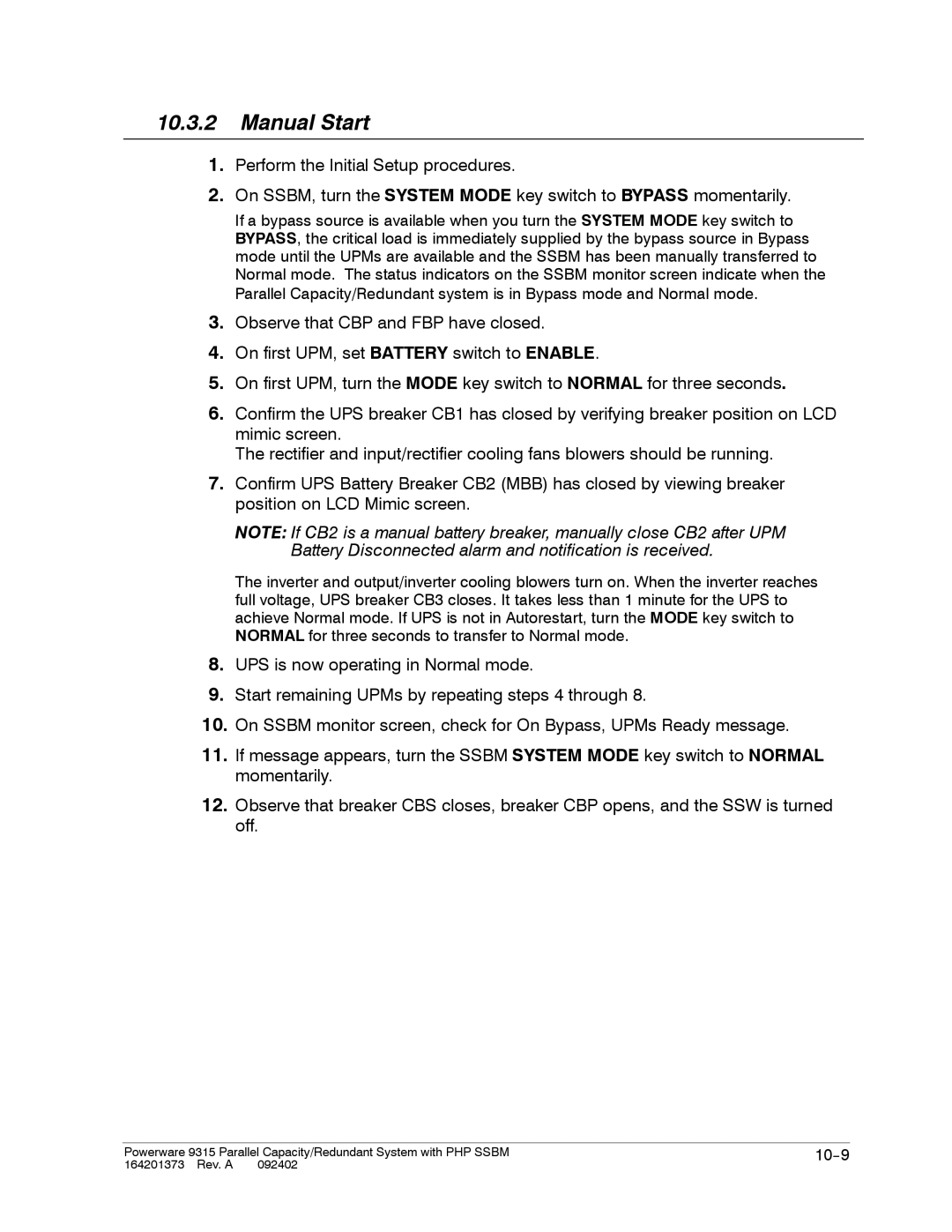10.3.2Manual Start
1.Perform the Initial Setup procedures.
2.On SSBM, turn the SYSTEM MODE key switch to BYPASS momentarily.
If a bypass source is available when you turn the SYSTEM MODE key switch to BYPASS, the critical load is immediately supplied by the bypass source in Bypass mode until the UPMs are available and the SSBM has been manually transferred to Normal mode. The status indicators on the SSBM monitor screen indicate when the Parallel Capacity/Redundant system is in Bypass mode and Normal mode.
3.Observe that CBP and FBP have closed.
4.On first UPM, set BATTERY switch to ENABLE.
5.On first UPM, turn the MODE key switch to NORMAL for three seconds.
6.Confirm the UPS breaker CB1 has closed by verifying breaker position on LCD mimic screen.
The rectifier and input/rectifier cooling fans blowers should be running.
7.Confirm UPS Battery Breaker CB2 (MBB) has closed by viewing breaker position on LCD Mimic screen.
NOTE: If CB2 is a manual battery breaker, manually close CB2 after UPM Battery Disconnected alarm and notification is received.
The inverter and output/inverter cooling blowers turn on. When the inverter reaches full voltage, UPS breaker CB3 closes. It takes less than 1 minute for the UPS to achieve Normal mode. If UPS is not in Autorestart, turn the MODE key switch to NORMAL for three seconds to transfer to Normal mode.
8.UPS is now operating in Normal mode.
9.Start remaining UPMs by repeating steps 4 through 8.
10.On SSBM monitor screen, check for On Bypass, UPMs Ready message.
11.If message appears, turn the SSBM SYSTEM MODE key switch to NORMAL momentarily.
12.Observe that breaker CBS closes, breaker CBP opens, and the SSW is turned off.
Powerware 9315 Parallel Capacity/Redundant System with PHP SSBM |
|
164201373 Rev. A 092402 |
|
